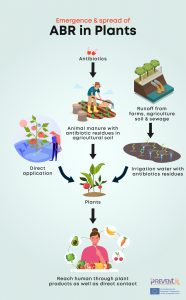During COVID-19 pandemic, antibiotics are used predominantly across Globe to prevent and treat secondary bacterial co-infections. Bacterial co-infections are frequently identified in influenza infections and are an important cause of morbidity and mortality. It is not easy for the physician to differentiate between viral infection and bacterial co-infection for which antibiotics are recommended suspecting the bacterial co-infection. This practice contributes towards wide range of antibiotic misuse in case of viral infections. The causative agents and occurrence of bacterial co-infections is less known in COVID-19 positive patients. The evidence shows very few blood cultures were positive for bacterimia during COVID-19 period as compared to blood cultures collected during influenza seasons. This evidence raised questions towards occurrence of bacteraemia and bacterial co-infections in COVID-19 patients and the treatment regimen.
A study conducted in Netherland by Thelen et. al entitled “Community-acquired bacteraemia in COVID-19 in comparison to influenza A and influenza B: a retrospective cohort study” aimed to study the occurrence, causative microorganisms and outcome of bacteraemia in COVID-19 patients in comparison to influenza A and B patients that will increase the knowledge about bacterial co-infections in COVID-19 and possibly refine the current guidelines on antibiotic management.
Total 1331 viral episodes were analysed in 1324 patients. The most frequently identified bacterial isolates in COVID-19 patients were Escherichia coli (n = 2) and Streptococcus pneumoniae (n = 2). Very low occurrence of community-acquired bacteraemia was reported among COVID-19 patients in comparison to influenza patients. This finding can strengthen the current clinical guideless of COVID-19 management i.e antibiotics can be advised only when a bacterial co-infection is suspected.
To read the entire article, kindly visit the website of BMC infectious disease (Link)







